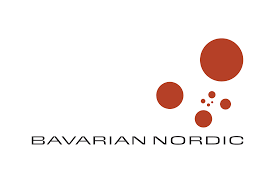Despite more than 80 percent of Danes associating themselves with the Evangelical Lutheran Church, otherwise known as the Danish State Church, it’s safe to say that Denmark is largely a secular society.
Every year fewer and fewer Danes attend weekly church services, and more people than ever before identify themselves as atheists or agnostics.
While this is a trend echoed in many Western societies, Denmark and the rest of Scandinavia have a long history of pagan beliefs, with Christianity’s initial adoption based as much on pragmatism as anything else.
The trees of life
Before the arrival of Christianity, Denmark followed the religion that we refer to today as Norse mythology, a unique and distinct blend of beliefs with a complicated system of associations.
In Norse mythology, there are nine worlds, each connected by the world tree, ‘Yggdrasil’.
With a host of gods including Odin, Thor and Loki, the religion is characterised by its myths and legends and focuses on man’s quest to achieve glory or honour in this world in order to be accepted into the next.
Marriage corrupts
It is one of history’s ironies that the Viking expansion into Europe actually set about the beginning of the end for the Viking religion.
As Vikings came into increasing contact with Christians in continental Europe and Britain, their acceptance of Christianity grew – particularly as more and more married Christians.
In many cases, however, Vikings converted to Christianity as a way to secure alliances and ensure neighbouring realms would not attack on religious grounds.
It pays to be Christian
Some of the earliest Danish Christians were merchants, who were forced to convert to Christianity as a way of trading with their continental peers. Many institutions had strict rules about trading with heretics – penalties and restrictions applied.
While some no doubt embraced the religion on its merits, there’s little doubt that it paid, literally, to be a Christian at that time.
These merchants would go on to encourage the conversion of other Danish merchants with whom they could use to expand their business.
Conditional converts
Another example of the pragmatism of the early Danish Christians can be seen in the actions of the king of Jutland, Harald Klak.
Forced into competition by his Danish rival Horik I, Harald was forced to flee Jutland in 826, leading him to seek aid from his southern neighbour, Emperor Louis I of Germany.
Louis promised to assist Harald only if he would convert to Christianity, a decision Harald took in order to reconquer his lands.
However, despite some initial success, Harald was forced to flee Denmark again, unable to defend his realm from pagan attacks.
Bluetooth impressed
Christianity began to gain ground in Denmark with the baptism of Harald ‘Bluetooth’ Gorsem around 960.
Rumour has it that the king was converted by a Frisian monk who held a heated piece of iron in his hand without apparent injury.
Impressed by the display, Harald allowed his son and daughter to be baptised, clearing the way for Christian succession.
Although the reasons for Harald’s conversion remain ubiquitous, there is little doubt that the decision was based on practicalities as well.
Beside him at the time of his baptism was Emperor Otto I, a powerful ruler on whom Harald would rely upon in future years.
The battle of the Christ
By the 11th century, Christianity was accepted as the major religion by the majority of the population; however, the version of Christianity being created was not in line with what the pope had in mind.
Viking ideas of strength and victory were still paramount to Danish society – early missionaries were forced to present Christ as a victor, and his battle with Satan in the Book of Revelation was a key element of the teaching.
Valhalla and Hell
As the Catholic Church had done with numerous other cultures, Christian ideas were blended with local ones and some Norse mythology remained.
Sacred groves and springs, along with other natural sights believed sacred, were incorporated with Christian beliefs, often leading to the building of chapels at set locations. Sacred pools of water would be associated with certain saints, becoming desired places for baptism.
The adoption of the cross as a symbol of importance was easily blended with Thor’s hammer, and the notion of heaven was not too far a stretch from the Viking belief of Valhalla.
Saints come marching in
By the 12th century, Christianity had taken root in Denmark. With eager encouragement from the pope, Danish saints began to be canonised and an archbishop appointed to oversee Denmark and Scandinavia.
Catholicism would be linked to the Danish monarchy and embraced by the population until the turbulent time of the Reformation, at which time the Danes again found themselves choosing a different system of beliefs.















